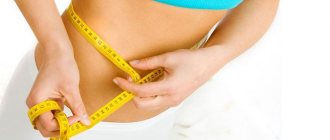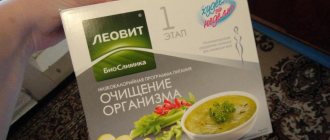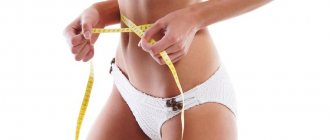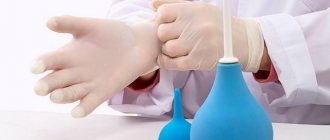When you have tried many diets and ways to regain slimness and get rid of a boring belly, it makes sense to try the Japanese method of losing weight with a towel “Lose weight while lying down the Japanese way”, reviews give hope for an excellent result. The method invented by Mr. Fukutsuji is somewhat unusual, but it works.
Gymnastics with a terry towel
The author of the strange method believes that a person gets fat due to the fact that over time his rib and pelvic bones diverge. If they are returned to their original state, then excess fat will disappear, the waist will become narrower and even a person’s height will increase. Japanese gymnastics for weight loss with a roller is based precisely on this idea.
An orthopedic doctor from Japan suggests lying on a piece of terry cloth rolled up in the form of a cushion, tied with a strong thread, and this way you can lose weight. In this case, you need to lie down on a surface that is not particularly hard. For example, a regular sports mat will do. You will need comfortable clothes for classes. You need to choose a towel according to the width of your body to get the right effect.
How to roll a towel into a roller for weight loss?
Introduction of volume-forming preparations (gels) into the submucosal layer of the urethra
The essence of this technique comes down to the formation of peculiar “pillows” under the urethral mucosa (as with the Mantoux test on the skin of the forearm). As a result of the introduction of the gel at several points, the lumen of the urethra narrows, and the prerequisites are created for better urinary retention. This method of treating stress urinary incontinence, especially in older women, is captivating with its “simplicity” - it is performed under local anesthesia, the operation lasts only 5-10 minutes. The operation is usually performed using a cystoscope through the lumen of the urethra. There are techniques that do not even require a cystoscope.
Unfortunately, despite the considerable cost, the effectiveness of this operation is significantly inferior to surgical treatment.
Repeated injections of the drug are often required. It is also not entirely clear how “harmless” the gels used are for the urethra and paraurethral tissues, especially with repeated administrations. However, there are a number of clinical situations where the introduction of gels is indeed preferable.
Lying down and losing weight is the essence of the Japanese weight loss method
What is the Japanese method of losing weight using a roller? Reviews say it's ridiculously simple and you don't actually have to do anything. However, a certain algorithm of actions is present.
Reminder for the Japanese method of losing weight
Here are the 10 steps:
- The terry towel is rolled into a tight roll;
- The structure is fixed with strong tape or thick thread;
- The person losing weight sits on the mat and puts the roll under his lower back;
- Then, he lies down on his back, making sure that the twisted fabric lying under his back is at the level of the navel;
- The legs are shoulder-width apart, the heels touch the floor, the toes are connected;
- Straight arms are placed high behind the head, palms down, little fingers connected;
- The body relaxes as much as possible;
- The person remains in this position for five minutes;
- Afterwards, slowly rolls onto the right side and rests for about a minute;
- Moves to a reclining position and carefully stands up.
It turns out that this is how easy it is to remove belly fat with a towel. The reviews are not lying; there is no difficulty in lying down on a cushion for a few minutes every day in a not very comfortable position. True, at first it is uncomfortable and maybe a little painful. After some time, the body will get used to this position, and lying will become comfortable.
Implantation of a synthetic midurethral sling (sling operation, TVT-O, TOT, etc.)
The midurethral sling is the most studied and, at the same time, the most effective treatment method for stress urinary incontinence (SUI). It would seem, what else can be said about the technique, which over 20 years, even in the era of “mesh wars,” has become the gold standard for the treatment of SUI, confidently positioned in all clinical recommendations?
We invite you to think about the very essence of this operation.
It is performed to restore urinary continence while maintaining normal urination (!).
The placement of a midurethral sling is a classic example of functional surgery. Unfortunately, many experts think in terms of “cut and sew” and firmly believe that the very fact of “correct” installation of the sling is quite enough for its correct operation. This is wrong. And practice eloquently demonstrates this. We are not surprised when a watchmaker, after replacing a part, asks for a few more days to adjust the correct movement of the mechanism. What can we say about the patient - we are introducing an artificial part into an already debugged system that has existed for years. Ideally, the implant should adapt as much as possible to the anatomy and physiology of the recipient, and not vice versa.
A few years ago, we also sincerely believed that sling implantation was a very simple and effective operation. At that time, the clinic performed no more than 100 operations per year. But a multiple increase in the number of patients and a more thorough postoperative examination showed that not everything was so good - in some patients the tension of the prosthesis was insufficient, in others it was excessive. In the first case, this was manifested by insufficient effectiveness, and in the second (much more unfavorable) - by symptoms of obvious and hidden bladder outlet obstruction (presence of residual urine, symptoms of hyperactivity, etc.). The solution to this problem suggested itself - the possibility of adjusting the prosthesis after surgery.
“Why after surgery and not intraoperatively?” - the reader will ask. The fact is that up to 20% of patients lose urine only while standing. And patients urinate while sitting. In the operating room, the patient lies in the lithotomy position under anesthesia. And for an adequate “test drive” of the installed sling, a woman must be in the most natural state for her usual lifestyle: be able to walk, get up from a chair, cough and sneeze while standing, urinate on the toilet, etc. Our clinic has developed a clear algorithm for managing patients before and after surgery, including various modifications of the cough test, uroflowmetry, determination of residual urine, questionnaires, cystometry, etc.
A serious argument not in favor of the standard (i.e. unregulated sling) are the real results (without “tricks”, such as “improvement”, “good answer”, etc.) published recently (Maggiore LR et al ., 2017). If you look at the truth, the statistics are quite sad: the “honest” effectiveness of the operation does not exceed 70%, and the frequency of obstructive urination is 5-20%... In the group of complicated patients (relapses, sphincter insufficiency, hypomobile urethra, mixed urinary incontinence) the indicators even more inconclusive... It is important to note that the so-called “de novo hyperactivity”, which often occurs after sling operations, can also be a consequence of subclinical urethral obstruction. This condition is insidious in that patients have no residual urine. That is, there is no formal reason to cut the implant, but if you cut it, most patients experience obvious improvement!
This problem can only be avoided by carefully analyzing the change in uroflowmetry indicators before and the next day after surgery and having the opportunity to loosen the tension of the loop. At the end of 2015, our clinic developed the concept of an adjustable sling. It includes two main provisions:
A -
The usual endoprosthesis has become adjustable. In the central part of the well-proven Urosling (transobturator sling) and Urosling 1 (retropubic sling) implants, adjustment threads were installed, which are removed through a vaginal incision. These threads are used to loosen the tension in the loop. The ends of the implants are not cut off after surgery and serve to increase tension. After the adjustment is completed and the effectiveness of the operation is confirmed, the adjusting threads and ends of the prosthesis are removed.
IN -
The adjustment became clear and absolutely controllable. An algorithm was developed to evaluate the effectiveness of the operation and adjust the tension. The stress test is carried out both in a lying and standing position. All patients undergo uroflowmetry to determine the volume of residual urine. If insufficient tension or obstructive symptoms are detected, adjustment is performed under local anesthesia. After each adjustment, the diagnostics are repeated at least twice.
In 2021, we published the first article on the results of treating patients with primary and complicated SUI using an adjustable sling: Adjustable transobturator sling as a first-line method for surgical treatment of stress urinary incontinence
The relevance of the problem is confirmed by the interest of foreign and domestic colleagues. Our experience with the use of an adjustable sling was presented at the American Urological Association Congress in Boston (AUA 2017): The effectiveness of transobturator adjustable midurethral sling in women with complicated SUI
The use of an adjustable sling in a complicated group of patients was reported at the congress of the International Society for Continence in Florence (ICS 2017): Poster - The effectiveness of transobturator adjustable midurethral sling in women with complicated SUI.
In November 2021, the concept of an adjustable sling was highlighted at the plenary session of the Congress of the Russian Society of Urology in Moscow (ROU 2017).
An article on the use of an adjustable sling for the treatment of SUI has been accepted for publication in the International Urogynecology Journal: Adjustable transobturator sling for the treatment of primary stress urinary incontinence.
Fabulous and stunning results from the procedure
The majority of those who have tested the Japanese method of losing weight with a towel, losing weight while lying down in Japanese, write laudatory reviews. And for good reason. The technique works and gives excellent results:
- The waist is removed a few centimeters;
- The figure is improving;
- The body gets rid of excess weight;
- The spine is stretched.
If you move the roll higher, under the chest or under the upper ribs, you can get additional effects:
- Posture is corrected;
- The chest rises;
- Growth increases.
How did the Japanese system come about?
The know-how in the form of a towel roll for weight loss was invented by the Japanese doctor Fukutsuji. He decided to make every person’s dream come true - to lose weight and do practically nothing for it. Moreover, the doctor promises that in addition to reducing your waist size, you will receive as a bonus a few centimeters in height, excellent posture and lifted breasts. How is the effect of the miracle technique explained and why such impressive reviews? There's really no magic here.
Unlike most nutritionists or fitness trainers, Fukutsuji focused on the human skeleton, not fat tissue. According to the Japanese, most people have a protruding belly not because of excess weight, but because of the discrepancy between the hypochondrium and pelvic bones. That is why this figure defect occurs even in thin women and men. There are also many such people among Hollywood stars. They bring themselves to the point of anorexia, but their stomach sticks out as before. This may be due to both body type (apple body type) and the discrepancy of the above-mentioned bones. It is by lying in the position proposed by Fukutsuji that you can tighten your abdominal muscles and make your waist thinner.
Why are overweight people more likely to lose weight than those who are thin or slightly overweight? Agree that it is much more difficult for women and men who have shouldered several dozen extra pounds to move. Under the weight of its own weight, the back bends, and there can be no talk of a beautiful gait and posture. Using the exercise, you can stretch the spine and make the abdominal and waist areas visually tighter.
Who needs it, can and cannot - indications and contraindications
Ladies who want to quickly remove the sides and make the curves of their body clearer need an original way to form a beautiful waist. The method is available to almost every healthy person. Gymnastics will be a wonderful addition to basic training.
There are also contraindications to exercising using the Japanese weight loss method using a roller. Reviews from doctors confirm this. Doctors categorically do not recommend lying like this for anyone who has back problems, injuries or osteochondrosis. This method is independent work with the spine; having weak back muscles, you need to be as careful as possible to avoid injury to the vertebrae and hip joints.
Why is the method popular?
The Fukutsuji method is popular, first of all, because it is unlike any other way to quickly lose weight. It does not require strict dietary restrictions and does not involve intense exercise .
Japanese gymnastics, developed by the Japanese doctor Fukutsuji, is rapidly spreading in many countries and helps girls achieve a thin waist. At the same time, the so-called exercise consists of just one static exercise - lying on a towel cushion for the spine for 5 minutes daily.
Fukutsuji roller exercise for the spine
Exercise with a back roller works the muscles of the sides and abdomen, stretches the spine, corrects the position of the pelvic bone, and triggers metabolic processes at the cellular level, as a result of which fat deposits are very quickly converted into energy necessary for the cells.
The description of such gymnastics for the spine causes skepticism among many, and that is why people begin to test the method. The result is not long in coming: the effect is noticeable almost immediately, so the charging principle quickly spreads among acquaintances, girlfriends, and colleagues.
Efficiency, simplicity and safety are what make Japanese exercises for the spine so popular.
A miraculous method - video about the technique
Japanese gymnastics for weight loss with a roller is a good stretch that helps polish the figure in the waist area and straightens the spine. With regularity and correctness of exercises, a pleasant, sustainable result will appear.
However, overweight people will not be able to rid themselves of many kilograms of fat using the Japanese method exclusively. You will need exercise, nutritional adjustments, and for some, hormonal treatment. For other people, the method of lying down to lose weight will give them the opportunity to say goodbye to their belly and become a little taller.
Minimal effort and quick results
Interest in the Japanese doctor’s method is growing due to the popular belief that the effect appears easily and simply, according to the principle of “lying down and losing weight,” thereby immediately showing results with little effort. Only the position you take is clearly not for relaxation, you still have to experience some muscle tension and discomfort.
For whom is the exercise useful?
It is wrong to think that exercise is only useful for older people. According to doctors, the incorrect position of the pelvic and hypochondrial bones begins to form at a young age and even in adolescence.
After all, now most children are characterized by physical inactivity. They spend most of their time at the table, studying at school and institutes; at home they spend time on computers, smartphones and tablets, and all this in a sitting position.
Only a sedentary lifestyle changes the position of the skeletal bones, leading to poor posture, intervertebral hernias, fat deposition and figure deformation.
Even if a person feels completely healthy, without experiencing body discomfort or pain, this method should be used for the purpose of prevention.
And for those who already experience pain associated with clamps and intervertebral blocks, if they have scoliosis, osteochondrosis, or diseases of the internal organs, this exercise will be useful. After all, even minor deviations in the spine affect the functioning of nearby internal organs, leading to certain disorders.
How to make a roller
The advantage of this exercise is that all you need to perform it is a tight roller and a floor mat. The cushion will be convenient if it is twisted across the width of the lower back so that it does not protrude out on the sides, approximately 35-38 cm. The diameter should be up to 7 cm, in the first days its diameter can be smaller so as not to create a sharp load on the spine.
How to do the exercise
Dr. Fukutsuji's method involves performing the exercise while lying on a hard surface.
- Sit on the floor, stretch your legs;
- Place the roller behind your back;
- Holding it with your hands at waist level, lie on your back;
- Adjust the roller so that it is opposite the navel;
- Place your legs two feet apart, point your feet inward, touching your big toes (heels apart);
- Extend your arms above your head, palms down, so that your little fingers touch;
- Feel the muscle tension in the waist area, fix the position and lose weight while lying down for five minutes.
After five minutes, you need to remove the roller, lie down for a while and carefully turn on your side, without making quick and sudden movements, and slowly rise.
Pros and cons of the technique
The advantages of the Japanese Fukutsuji technique include:
- Easy to do.
- No physical fitness requirements.
- There is no need to buy special equipment and devices.
- Short duration (only 5 minutes daily).
- Fast and tangible results.
- The ability to lose weight without grueling workouts and strict diets.
- Improved figure and posture.
- Improving the position and, as a result, the functioning of internal organs and the digestive process.
- The ability to work out at home without going to the gym or having a trainer.
- Relief of back pain and tension.
But the technique also has disadvantages:
- Presence of contraindications.
- Possible discomfort and pain during or after exercise.
- Slow weight loss.
Obviously, there are much more advantages than disadvantages, which is why exercises with a roller for the spine are so popular.
Fukutsuji roller with a pattern, photo
Is it possible to lose weight with a roller?
As already mentioned, the exercise with a roller does not get rid of subcutaneous fat, but only stretches the silhouette by straightening your posture. Nevertheless, in combination with other methods of combating excess weight, very good results are achieved.
However, Dr. Toshiki Fukutsuji himself argued that even without other exercises and diets, you can lose weight. The specialist even called his work “Lose weight while lying down.”
Regular exercise, according to the doctor, helps reduce waist size by 2-3 cm in the first month. After 2 months, the sagging belly will disappear, and after 3 months, the outlines of a beautiful abdominal press will appear.
When working with the Fukutsuji roller, a reduction in waist size is achieved
How did Fukutsuji explain weight loss while lying down?
A Japanese doctor claimed that belly fat can be broken down for two reasons:
- During the exercise, the roller affects certain acupuncture points , so the method can be classified as effective oriental reflexology.
- The exercise refers to stretching, so the intercostal ligaments are strengthened, the muscles of the back and abdomen gain flexibility , as a result of which their potential increases by 20%.
In addition, straightening the spine helps correct the position of the internal organs, so they gradually shift and displace abdominal fat, which is forced to burn.
What sensations does a person experience after gymnastics?
Japanese gymnastics evokes different feelings and sensations in different people. Some claim that after the first practice, the waist size decreases by 2-3 cm.
The objective results of the exercise are the following:
- Breathing normalizes, breaths seem fuller, deeper, as if the volume of the lungs has increased.
- In a sitting position, it seems that the back has become completely straight and instead of hunching there is a beautiful curve.
- When moving and walking, the shoulders straighten.
- Improves sleep
- The chest is tightened, the waist is reduced.
At the emotional level, a person experiences a feeling of inspiration, high spirits, and a surge of strength and energy.
Contraindications
Since the Fukutsuji technique affects not only appearance, but also health, one cannot fail to take into account contraindications, which include:
- History of spinal injuries of any age.
- Any internal or external bleeding.
- Spinal diseases: spinal column hernia, disc protrusion, scoliosis, sciatica, osteochondrosis, osteoporosis, myositis, radiculitis, spondylosis, tumors, ankylosing spondylitis.
- Joint diseases: coxarthrosis, periarthritis, bursitis, tendinitis.
- Osteopathy, chondropathy.
- Diseases of the gastrointestinal tract, liver, kidneys.
- Fever, any acute respiratory infection.
- Hypertension.
- Restless legs or arms syndrome (tingling, itching, crawling in the extremities).
Some diseases in some cases can turn from contraindications into indications, so the best solution would be to visit a neurologist or orthopedist.










